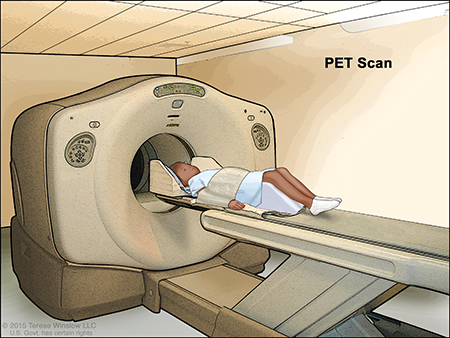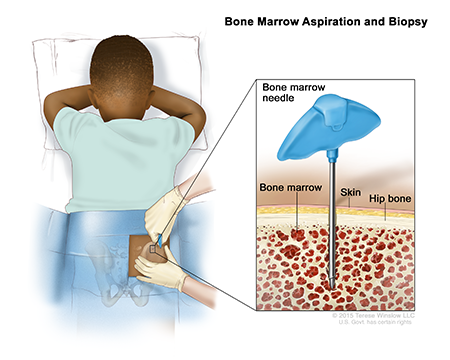Pediatric Cancer Diagnosis
At Doernbecher, your child’s oncologist (cancer doctor) consults with other experts and specialists to detect your child’s cancer as early as possible.
You’ll find:
- Doctors and other specialists who are national experts in childhood cancer, including leukemia and lymphoma. These specialists treat only children and young adults, so they understand your child’s specific needs.
- Specialists who are experts at identifying cancer in children, which can be difficult to recognize early because the symptoms are similar to those of more common childhood illnesses and injuries.
- A team of specialists — from specialized nurses to child life professionals to social workers — to support your child and family from diagnosis throughout treatment and survivorship.
Tests to diagnose cancer
Our experts may recommend one or more of these tests to check for cancer and learn more about your child’s condition.
Learn about:
Imaging tests
The imaging itself is painless. It may be uncomfortable for kids, though. They may need to lie still, sometimes in a semi-enclosed space, for 30 minutes to an hour.
We may use an IV to give anesthesia (medication to reduce pain or put your child to sleep) to help young children get through the scans. If we use radioactive dye, we will also use an IV.
We use imaging tests to see whether cancer and lymphoma has spread or how well treatment is working. We rarely use imaging tests for leukemia.
Our imaging technology includes:
- Ultrasound, which uses sound waves to create a picture of soft tissue. It can help us see a tumor’s location and may be used to see lymph nodes just under the skin or in the belly.
- CT (computed tomography) scans make more detailed images of the body than ultrasounds. They can show the size, type and location of enlarged lymph nodes or tumors.
- MRI (magnetic resonance imaging) scans use magnets and radio waves to create detailed images of structures inside the body.
- Chest X-rays can detect enlarged lymph nodes in the chest.
- PET (positron emission tomography) scans use a safe, low-level radioactive dye called a tracer, and a special camera. The tracer is injected into your child’s bloodstream to make cancer cells easier to see. The scan also gives us information about enlarged lymph nodes. It can show how your child is responding to treatment.

Doernbecher follows the guidelines of the international Image Gently Alliance. For your child’s safety, Image Gently recommends using the lowest amount of radiation possible.
Biopsies
In a biopsy, we take a small piece of a tumor or other tissue from your child’s body to look for cancer cells. We may use a needle or an incision. Before a biopsy, an anesthesiologist will give your child medication to prevent pain.
Your child’s biopsy may be done by a surgeon or by a radiologist (a doctor who specializes in imaging). Our surgeons and radiologists have many years of experience doing biopsies on children. We use the safest and least-invasive methods.
After the biopsy, a doctor called a pathologist looks at the tissue under a microscope. The pathologist looks for cancer cells and gathers information to help us plan the best treatment.
Children with cancer, lymphoma or leukemia may have one of these common biopsy types:
- Surgical biopsy: A surgeon makes an incision to remove a lymph node or tissue from a possible tumor.
- Needle biopsy: We use small, hollow needles to remove tiny pieces of tissue from a lymph node or tumor.
- CT-guided biopsy: We use a CT scan to guide a needle biopsy. This is used when a lymph node or tumor is deep in the body.
Blood tests
These tests measure cells and chemicals in your child’s blood to find anything abnormal. OHSU hematopathologists (experts who diagnose blood diseases) are some of the most experienced in the nation. They help us match treatments to your child’s specific cancer type.
Bone marrow tests
Bone marrow tests can help diagnose leukemia. They are rarely used to diagnose lymphoma, but they might help us see if it has spread.
We might do one of two tests — a bone marrow aspiration or a bone marrow biopsy. Both involve inserting a hollow needle into one of your child’s bones, often a hip bone, to collect a sample. An anesthesiologist will put your child to sleep to prevent pain.
The test takes less than 30 minutes. We send the sample to our lab, and expert hematopathologists examine it to make a diagnosis.

Lumbar puncture (spinal tap)
The doctor inserts a small, hollow needle between spinal bones to withdraw liquid called cerebrospinal fluid, or CSF. Tests on CSF can detect leukemia cells.
An anesthesiologist will put your child to sleep for this test.
For families
Call 503-346-0640 to:
- Request an appointment.
- Seek a second opinion.
- Ask questions.
Knight Cancer Institute
We offer advanced treatments and expert care as part of the OHSU Knight Cancer Institute.
Location
Doernbecher Children’s Hospital, tenth floor
700 S.W. Campus Drive
Portland, OR 97239
Find other locations across Oregon and in southwest Washington.
Free parking for patients and visitors
Refer a patient
- Refer your patient to OHSU Doernbecher.
- Call 503-346-0644 to seek provider-to-provider advice.
Cancer clinical trials
Clinical trials allow patients to try a new test or treatment.